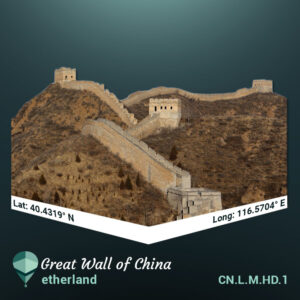 With multiple walls dating back to the 7th century BC, the Great Wall of China is an unfathomable construction work and the longest structure ever built, reaching 21,196 kilometers long. Once built as a defensive piece meant to protect China's north, it has until today stood the test of time and still welcomes visitors; most of the time left in awe in front of the deep history and the beautiful scenery that the Great Wall provides.
With multiple walls dating back to the 7th century BC, the Great Wall of China is an unfathomable construction work and the longest structure ever built, reaching 21,196 kilometers long. Once built as a defensive piece meant to protect China's north, it has until today stood the test of time and still welcomes visitors; most of the time left in awe in front of the deep history and the beautiful scenery that the Great Wall provides.
Talking about the Great Wall, it occurs to us several titles, a gem of Chinese civilization, the crystallization of the wisdom of the ancient Chinese people, a symbol of the Chinese nation, the ancient Chinese military defense project, etc. Stretching from Shanhai Pass in Hebei Province in the east to Jiayu Pass in Gansu Province in the west, the present-day Great Wall of China traverses seven provinces, cities, and autonomous regions with a total length of about 6,700 kilometres, which is worth entitling a miracle in the history of world architecture.
Built during the Spring and Autumn Period between the 8th and 5th centuries BC, when the mainland of China was fragmented by rivaling states, the early walls represented a piecemeal project respectively erected as protection against invasions. As far as the Qin Dynasty achieved the grand unification in 221 BC, Emperor Qin Shihuang, the first great emperor in Chinese history, ordered the reconstruction of previous sections of the walls, demolishing the fortifications impedimental to his centralised rule while rebuilding and combining selective stretches along the northern frontier to consolidate border defence. That was the real birth of the Great Wall. Afterward, successive dynasties participated, more or less, in the repair or rebuild actions. The long constructing period of the Great Wall was accompanied by an unmeasurable investment of manpower and resources. As the country's military defence project in the cold weapon war era with the longest construction time and the largest amount of engineering work in the world, the Great Wall embodies the blood, sweat and wisdom of Chinese ancestors.
Since the Qin, due to technical restrictions, the walls were mainly made up of stones and rammed earth. Things changed until the Ming Dynasty in the 14th century. Bricks were introduced as the main materials to reinforce the walls. Additionally, up to 25,000 beacon towers were built on the wall to prevent potential invasions by nomadic tribes. Regularly guarded by sentinels, the watchtowers performed a signalling role by setting fire and making smoke. In idiomatic Chinese, smoke signals to alert the military is metaphorically described as “smoke of the wolf”. To this day, even though the Great Wall has almost lost its military significance and becomes more of a cultural symbol, the beacon towers used to ignite “smoke of the wolf” is still one of its important visit points.
Despite its function as a rampart in military matters, the Great Wall also contributed to the linkage between agricultural groups and nomadic tribes. Till the end of the Qing dynasties, multicultural communication and commerce between the two major economic and cultural systems were a perennial subject of interest throughout the whole feudal history of China. When there was no battle, some passes along the Great Wall gradually developed into prosperous trade centres. Later on, due to the development of the Silk Road, the Great Wall played the role of a "service area”, escorting trade and cultural exchanges with the Western world. The Great Wall and the Silk Road jointly paved the road of peace on the Eurasian continent.